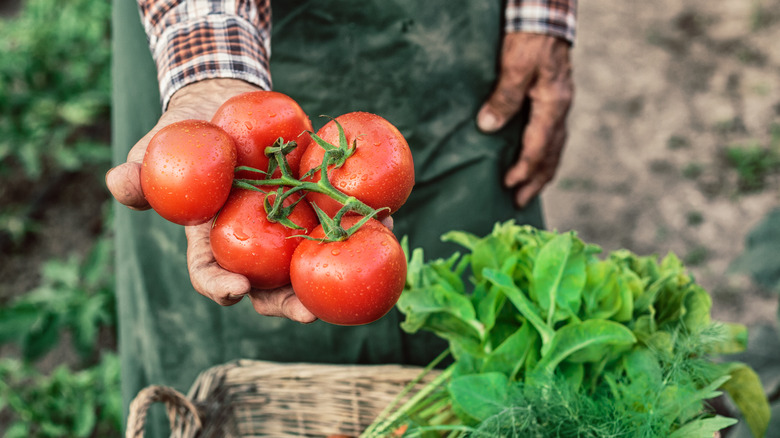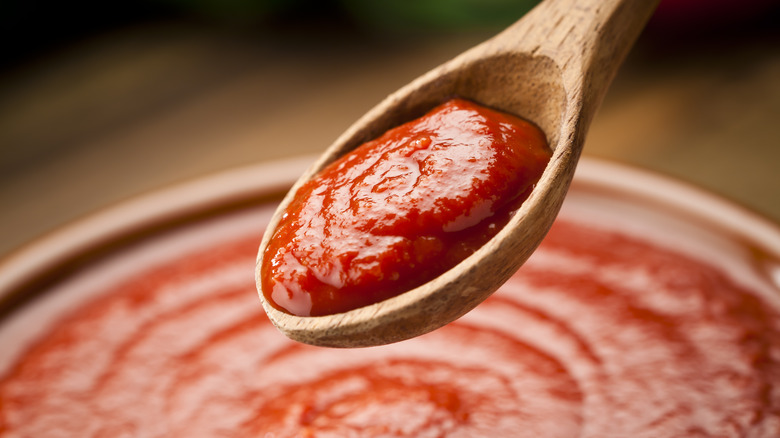Americans Love Tomatoes, But Mainly Eat Them In Other Foods
Beefsteak and romas, cherry and grape. These are a few of America's favorite things — at least when it comes to tomatoes. The USDA reports tomatoes as one of America's top two most consumed vegetables year after year (along with its rhyming friend, the potato). The average person in America consumes close to a whopping 31.4 pounds of tomatoes each year. But that doesn't mean Americans are biting into raw tomatoes like they might other popular veggies such as lettuce and onion. More than half of the tomatoes we eat each year come from a can. That's not a bad thing as there's not a considerable difference in nutrients or flavor.
One reason for the popularity of tomatoes is how universally they're used in cooking, not necessarily on their own or raw. Fresh tomatoes aren't available year-round, making canned an optimal choice. That's not to mention the convenience offered by shelf-stable vegetables — sitting at the ready — in the pantry. These are just a few of the reasons tomatoes are so loved by Americans.
Why are tomatoes essential in so many dishes?
If you feel like every recipe you read calls for tomatoes, it's for good reason. Tomatoes offer a unique flavor that isn't found in many vegetables. Tomatoes are acidic, clocking in at around 4.5 on the pH scale (that's between white vinegar at 3 and coffee at 5). That means tomato is less shockingly sour than most citrus, but adds a level of complexity to the dish.
The acid in tomatoes can do more than just add brightness and tartness. It also impacts the texture of the meal, working as a tenderizer.
That's at least — in part — why so many cuisine cultures such as Italian, Mexican, Middle Eastern, and so on rely on tomatoes in such a wide array of dishes. Foods like pasta and pizza sauces, stews, and casseroles rely on tomatoes. Because American cuisine is really built up of dishes and flavors across numerous immigrant cultures, it makes sense that we find ourselves reaching for tomatoes (more often than not) in the kitchen.

